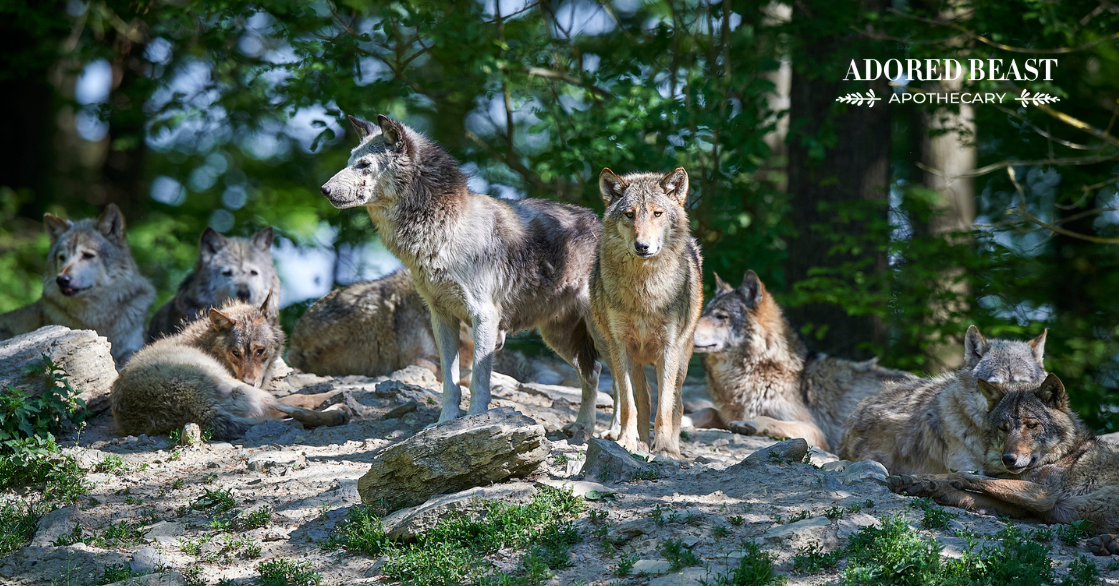We love adding fresh fruits to our dogs’ meals. Fruit provides a wide variety of healthy minerals and nutrients, and most are well-loved by our canine companions. From pineapple and apple, to cantaloupe and kiwi (remember, no grapes please), fruits are just plain awesome. If we’re making a smoothie or fruit salad, we’re sharing.
And blueberries top the list. There are so many things to love about these little blue bursts of goodness.
Here are some of the top benefits of blueberries for dogs, how we feed them, and a few things to remember! Whether you feed kibble or raw, home cooked or dehydrated, blueberries can’t be beat!
What are the Benefits of Blueberries for Dogs?
Why do we love these little blue bundles of joy so much? What are the benefits of blueberries for dogs?
Let’s start with the nutrient profile. Blueberries are a good source of several vitamins and minerals, including:
- Vitamin K1 – good for bone, blood, and heart health
- Manganese – an essential mineral needed for amino acid, protein, lipid, and carbohydrate metabolism
- Vitamin C – an antioxidant important for skin health and immune function
- Fiber – aids digestion and helps promote good digestive health
- Vitamin E – essential for cell function and fat metabolism, and helps promote eye and muscle health
- Copper – copper plays a role in the formation of a dog’s bones, connective tissue, collagen, and myelin (the protective covering of nerves)
- Vitamin B6 – responsible for glucose generation, red blood cell and nervous system function, hormone regulation, immune response, niacin synthesis, and gene activation
Together, these vitamins and minerals make blueberries an ideal component of the diet to help improve or support the health of the:
- heart
- eyes
- brain
- joints
- gut
- urinary tract
Blueberries are also a rich source of phytochemicals – special chemicals that you can only find in plants. The major beneficial phytochemicals in blueberries are polyphenols, including anthocyanins, proanthocyanidins, other flavonoids, phenolic acids – and these are up next!
The Best Thing About Blueberries: Antioxidants
The best thing, in our opinion, about blueberries for dogs is their antioxidants. In fact, blueberries have the highest antioxidant count of any fruit!
Antioxidants are molecules that fight free radicals in the body.
Over the course of your dog’s daily life, they accumulate free radicals in the body. Exposure comes from all different sources, including things like pesticides and cleaners, pollution, exercise, and a diet high in sugar.
Free radicals are oxygen-containing molecules with an uneven number of electrons. The uneven number allows them to easily react with other molecules. And while free radicals do serve important functions in the body (for example, immune cells use free radicals to fight infections), a delicate balance is crucial.
Free radicals can cause large chain chemical reactions in your body because they react so easily with other molecules. These reactions are called oxidation. This oxidation leads to a state called oxidative stress.
Oxidative stress is linked to multiple illnesses, including diabetes, heart disease, and cancer. Prolonged oxidative stress can damage DNA and other important molecules in the body. Sometimes it even leads to cell death.
Antioxidants in Blueberries
Ok, so free radicals = bad, antioxidants = good. Enter blueberries!
These are the polyphenols (anthocyanins, proanthocyanidins, flavonoids) that we mentioned above.
- Anthocyanins. These are the main antioxidants in blueberries. They’re what gives them their color. More than 15 different anthocyanins have been indentified in blueberries. These anthocyanins seem to be concentrated in the skin of the fruit, making it the most nutritious part. Research directly links anthocyanin to cancer prevention and protection.
- Quercetin. The antioxidant activity of quercetin is mainly manifested through its effect on glutathione (GSH), enzymatic activity, signal transduction pathways, and reactive oxygen species (ROS) caused by environmental and toxicological factors. Quercetin shows a strong antioxidant activity by maintaining oxidative balance. It has also been linked to lower blood pressure and a reduced risk of heart disease and supporting the body in relieving allergy symptoms.
- Myricetin. This flavonol may have a number of health benefits, such as helping prevent cancer and diabetes thanks to its ability to protect healthy cells and induce cell death for harmful ones. It can also effectively block intracellular ROS (reactive oxygen species).
How to Feed Blueberries for Dogs
To start, blueberries are great, yes, but remember to keep fruit and veg to about 10% of your dog’s diet. They don’t need more than that. We mix it up and do different things each day, but stick to that 10% rule. And that’s a good 10% mix of different fruits and veggies – not just blueberries!
With fruit, most have lots of natural sugars, so you don’t want to overdo it. But with blueberries, they’re really low in calories and sugar, so they’re a really great choice.
So how do you feed blueberries for dogs?
Both of our dogs will only eat frozen blueberries. It’s probably a texture thing. And that’s just fine – easy in fact. We always keep a bag for organic frozen blueberries in the freezer and just add a handful to dinner a few times a week. Make sure you find organic blueberries, whether frozen or fresh, just to reduce exposure to pesticides. You can’t just rinse those chemicals off!
PLUS!! According to research, freezing blueberries actually increase that valuable antioxidant availability, so freeze away! Because of that, we think this is the best way to feed them.
If your dog likes them fresh, just give them a quick rinse and feed them as treats, or again, right on top of dinner. Because they’re low in calories, and small, they’re great to use for training! You can also make a nice smoothie with some other fruits and veg and a little kefir for a probiotic kick. And, for a nice cool treat in the summer, freeze the smoothie in an ice cube tray for a frozen ‘pupsicle.’












